Crustaceans have a hard, jointed external skeleton, called an exoskeleton, that protects them like armour. They have five pairs of jointed legs, and in some species, the front pair of legs are modified to form strong pincers. Crustaceans have compound eyes (made up of lots of lenses) on stalks and two pairs of antennae, which help them to sense predators. Most crustaceans live in water, but some, such as woodlice, live in damp places on land.
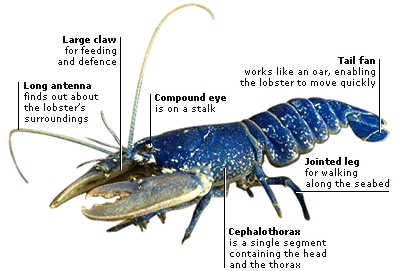
The common lobster is blue, and can be as much as 1 m (3 1/4 ft) long. Lobsters have a jointed body, a long abdomen, and a wide tail fan. As the lobster grows, it gets too big for its hard shell, or carapace. The shell splits, the lobster crawls out, and a new shell hardens. Lobsters feed at night, cracking open molluscs with their huge claws.
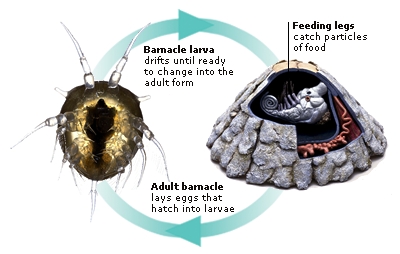
Some crustaceans, such as barnacles, can only move about as larvae. Barnacles lay eggs that hatch into larvae and move away. These drift freely as they grow, before attaching themselves to a rock, the bottom of a ship, or a whale, and changing into the adult form. The adult barnacle cannot move around.
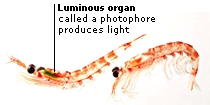
Krill use long hairs on their front legs to filter food particles from the seawater. They have a soft body and large eyes. They are sociable, often living in huge swarms, and are important in the marine food chain. Baleen whales feed on nothing but krill.
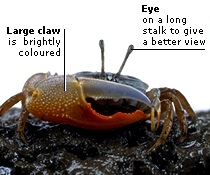
Most crustaceans have two claws that are the same size, but the male fiddler crab has one enormous claw and one tiny one. It waves the giant claw about in order to attract a mate and also to frighten away competing males. The huge claw can make up half of the crab’s total weight. Fiddler crabs live in mangrove swamps, where they make burrows in the mud.
PHYLUM: CRUSTACEA
Class: Branchiopoda
Features: small, free-living, filter feeders with bristled mouthparts
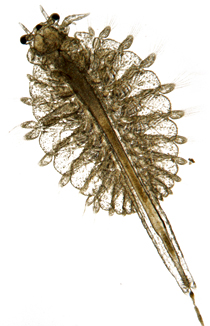
Class: Cirripedia
Features: box-like bodies, sessile (anchored to one spot) as adults
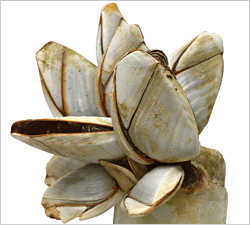
Class: Malacostraca
Features: jointed legs, often pincers, eyes on stalks
No comments:
Post a Comment